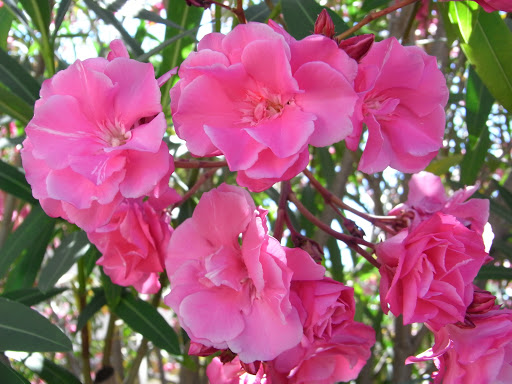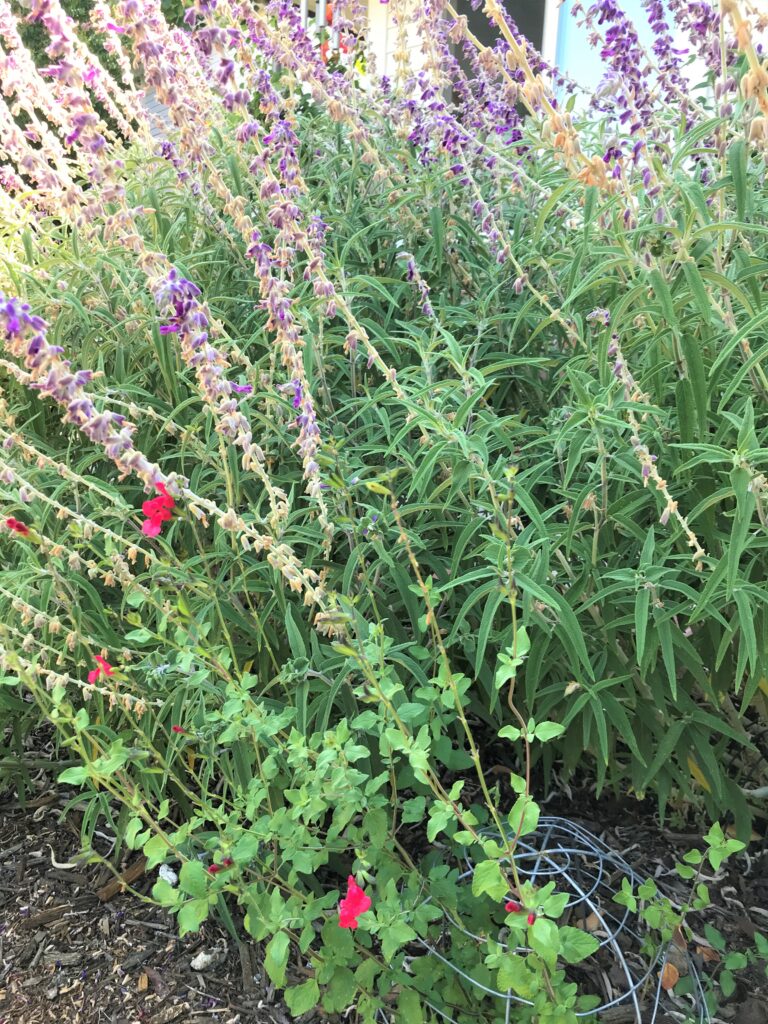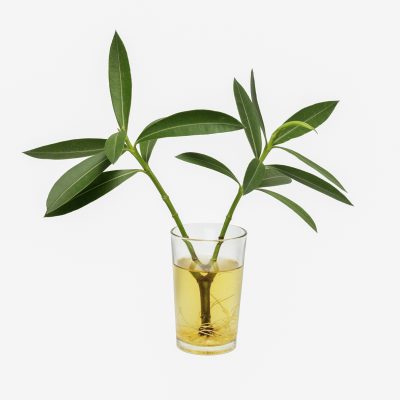By David George – Many of my fellow UC Master Gardeners love to propagate – plants that is. My wife and I do also. We have grown many native cut-leaf geraniums, pelargoniums (European-style geraniums), and sages from cuttings off mature plants. It’s an easy and inexpensive way to build a beautiful garden. The process takes a bit of time, but hey we all have lots of time to spend on gardening these days, right?

One of my friends, Jack H. came to me the other day with a question: How could he propagate oleanders – those large evergreen bushes along our highways with showy displays of red, pink and white flowers in July and August? Jack’s friend has a large acreage in Lake County and needs a visibility screen of perhaps 100 oleanders. But he does not want to pay $35-40 per plant at his friendly garden center. He had other uses for that $4,000!
Jack remembered how his mother used to snip small twigs off neighborhood bushes when she took him for morning walks as a child. She would fill up a canning jar with tap water, stick the twigs in, and a few weeks later, she would transplant the twigs with their newly formed roots into her own garden – for free. Could the same be done with oleanders?
The answer, Jack is YES, oleanders (a native of Mediterranean regions), like other beautiful landscape plants can be propagated from cuttings. And snipping does not harm the donor bush more than a regular trimming. I shared with Jack (and now you) a good YouTube video link that shows this easy process: https://www.youtube.com/watch?v=J-5MBZ_4ws8 (Video courtesy of YouTube.com and the producer, Katie Jarman.) Be careful with Oleanders around pets and livestock though as all parts are poisonous.


This is a very good time of the year to propagate oleanders, geraniums, sages, and other summer bloomers while they are producing new growth like crazy. Simple stem or branch cuttings can be placed in water for several weeks until roots form. At that point, you should transplant them into four-inch pots with planting mix or your own homemade compost, then into the ground in the fall after the first rains soak the soil. Most summer-bloomer cuttings will stay alive during winter months then begin to grow in the spring and flower next summer. Here is an instructional web link for rooting oleander cuttings in water, but it applies also for other landscape plants: https://www.nature-and-garden.com/gardening/cuttings-oleander.html (Courtesy Nature & Garden).
What an eco-friendly way to populate your own garden with marvelous summertime bloomers. Propagating plants from rooted cuttings is interesting, free, and an all-natural way to show your neighbors that you, too are a naked gardener. Thanks, Jack H. for your propagation question. Email your comments and questions to: NakedGardener@diablogazette.com. In some cases these may appear in future columns.

